Geraldine Moodie, granddaughter of Susanna Moodie, was the first woman to own photography studios on the Canadian prairies and create an extensive oeuvre. Geraldine owned three photography studios (Battleford, Maple Creek, and Medicine Hat), raised six children, and followed her husband, J.D., to eight different Northwest Mounted Police postings from the Prairies to Northern Canada. The one constant in her peripatetic life was her art—drawing and photography—and what she accomplished is remarkable. This collection of poetry casts light on Geraldine’s life, using her photographs and biographical details available through letters, newspaper articles, and family interviews collected by curator Donny White. With those fragments, the poet imagines the woman behind the lens, considers possible motives for her decisions and actions, and celebrates her life and work.
“With exquisite and taut detail, Rebecca Luce-Kapler’s poetry takes us into the life of Canada’s first female photographer. Was Geraldine Moodie’s lens drawn to the exotic in the Canadian West? Or did her singular approach to photography disrupt her generation’s romantic and colonizing notions of the ‘noble savage’? These compelling poems are a result of Luce-Kapler’s deep research and her skill in capturing the illuminating moments that reveal a life. The Negation of Chronology is the untold story of a remarkable woman.”
—Lorri Neilsen Glenn, poet and essayist
“Sustained attention lit by flashes of brilliance—the poems in The Negation of Chronology exhibit the same assurance and artistry as the photographs taken by their remarkable subject, Geraldine Moodie. Historically precise, deeply imagined, and multi-focal, this is a sequence to study and savour.”
—Susan Olding, author of Pathologies: A Life in Essays
“The Negation of Chronology captures the spirit of a remarkable woman in remarkable times. In these stunning, evocative poems, we are offered a portrait of Geraldine Moodie as both fluid and fixed in time, a female photographer grappling with objectification and the struggle for agency, filtered through the lens of her private and professional selves. Rebecca Luce Kapler renders a complex daguerreotype: a visual interplay of the shadow and light of a marriage, the Canadian prairie and northern landscapes, and the unspoken inner life of a woman artist.”
—Gail Sidonie Sobat, author of How the Light is Spent
“Red-haired, courageous Geraldine Moodie, granddaughter of Susannah Moodie and great-niece of Catharine Parr Traill, was a pioneering Canadian photographer, preserving images of Cree and Inuit life and of the far North. Rebecca Luce-Kapler’s The Negation of Chronology reclaims one of our foremothers, while catching the sweep of a remarkable life and the stillness and stopped life of enduring photographs This is a beautiful book.”
— Elizabeth Greene, editor of The Dowager Empress: Poems by Adele Wiseman, author of A Season Among Psychics
powered by Crowdcast
Rebecca Luce-Kapler has published over forty poems in a number of literary journals across Canada and is author of The Gardens Where She Dreams. Her book, Writing With, Through, and Beyond the Text: An Ecology of Language, has been used in numerous academic contexts. Currently, she is the Dean of the Faculty of Education, Queen’s University in Kingston, and finds that her work as a poet keeps her connected to beauty and calm, as does her home on a lake north of Kingston, Ontario.
Evening Primrose, Calgary, 1886
Lamp lit and fire dampered,
Geraldine scrubs the supper crumbs
from the table, lays out
her brushes and colour,
brings down her sketches from the shelf.
She feathers paint along a faint pencil line,
a hint of pink shadow on the underside
of a flower that does its work after sundown,
its blossom a siren call for moths.
Agnes has invited her to show
at the Colonial and Indian Exhibition
Now there is a purpose to transpose
summer drawing into watercolour.
These are no fanciful
parlour paintings, but the botanic
of a prairie flora
that moves imagination westward.
She brushes stages of budding into flowering,
a plant just past
the first burst of spring,
lobed leaves spiraling out of a rosette,
Oenothera albicaulis.
She paints moonlight catching
white veins, silvered pathways
of blossoming, deepens
the gold of the stigma,
fecund hearts invisible
in darkness.
Here is where
the real work begins,
this night
of delicate, deliberate business.
Creating Light, 1896
After following the light, courting it into her studio, opening
and closing curtains like filters, she wishes to create it,
summon it at her will and not have sitters linger in the dim
until their visages imprint the glass plate. She knows
the warnings about flash powder, but the sun can be unreliable.
Just when she wants an abundance of light, the day is grey and rainy,
another sitter is lost, unwilling to be frozen for so long again.
A small shake of powder in a pan, a spark, a burst
of light before her subject even takes a second breath.
Just to be certain, she invites J.D. for a portrait to keep
her reputation intact should things go awry.
He will not startle at the noise and is level-headed
in a crisis. She chooses the brocade backdrop
and his favourite captain’s chair, a regal setting.
She measures the flash powder, checks that it is dry, prepares
the flint, calls J.D. Dressed in his finest uniform, she sees
how handsome he’s become, how the clothing offers dignity.
She sets a bucket of water off to his right, just out
of the frame, reassures him that it is a precaution
for something unlikely. The aperture is set, powder
in its pan, and she opens the shutter, strikes the flint, lights the flash.
It startles them both, but there is no fire and she laughs
in relief, J.D. joining after a pause. You are quite
the woman, he says, but the compliment hardly registers
for she is thinking he might have jumped with the light,
that she needs to develop that photograph today,
she needs more than managing the dangerous,
she needs to know she has created the sun.
Closing the Studio, 1899
I have been here before, J.D. deciding
our lives need to change. Overnight
he sells our Maple Creek holdings,
except the studio, which I own.
He presents the papers to be signed, angry
I will not acquiesce. He argues
I will have to sell it from Lakefield,
that it will be troublesome, financially ruinous.
But I have decided. I shutter
my studio, certain I will return, somehow.
The next posting, the next adventure,
J.D. will find his acclaim, but I
just want time to go deep into a place,
find all the angles with my camera,
watch the pattern of light and shadow, different
every day and season. I long to map
a place onto glass plate until it seeps into my skin.

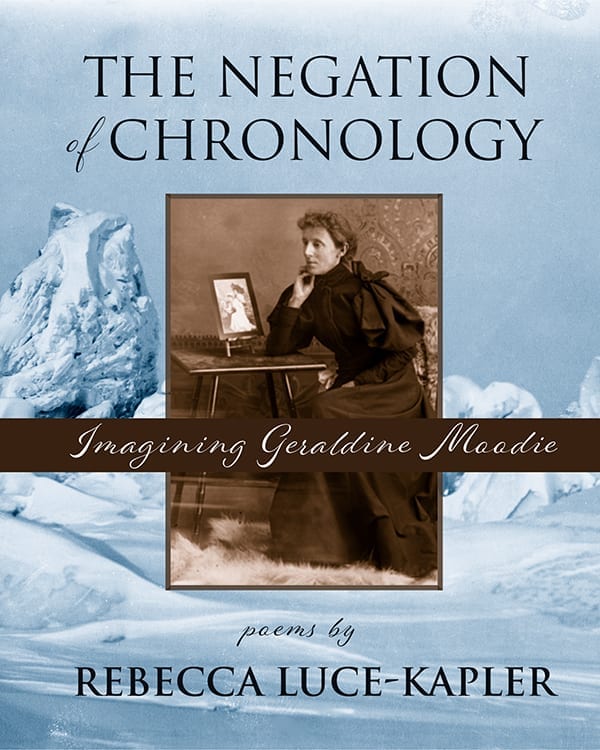

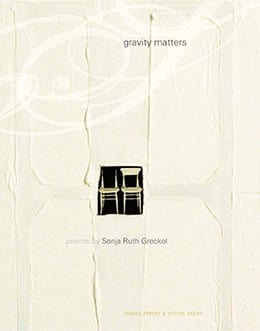
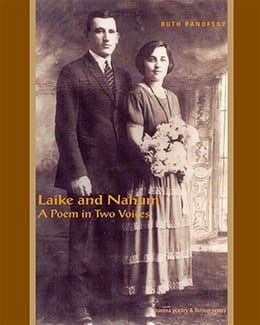
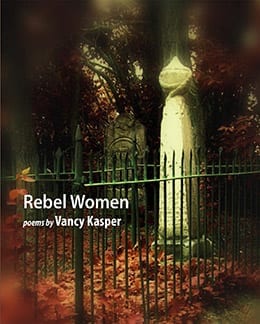
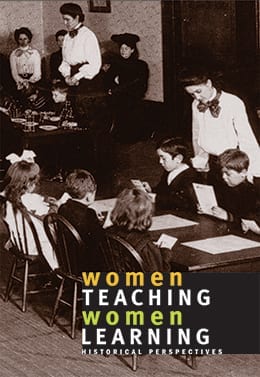

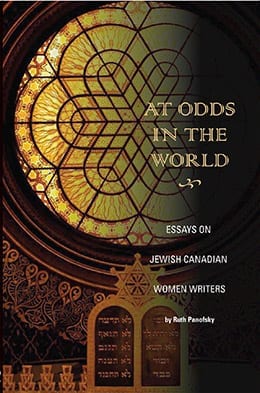
Inanna Admin –
The Negation of Chronology: Imagining Geraldine Moodie by Rebecca Luce-Kapler
reviewed by The Miramichi Reader – May 17, 2020
https://miramichireader.ca/2020/05/negation-of-chronology-review/
There’s a photo I love. In black and white. My wife and I sharing a moment, having a laugh. We’d just completed a marathon, our first. And we’re sitting on a curb, exhausted, content, unaware our picture’s being taken. You see more in the black and white. Depth of character, emotion, the moment. Perhaps the same reason a book – black ink on white paper, conveys much more than a movie.
Now, to the present day. We were still in relative isolation. Distancing. When I received a virtual stack of books to read and review. Remarkably, I enjoyed each one. But simply by chance Rebecca Luce-Kapler’s The Negation of Chronology was my final read, as though fate, in its prescient wisdom, selected this title as my conclusion, a curtain drawn across a monochrome stage.
Our author opens this book of poems with a tone-setting quote from Geoff Dyer, In photography there is no meantime. There was just that moment and now there’s this moment and in between there is nothing. Photography, in a way, is the negation of chronology. And with that, we begin.
From Camera obscura: Early moments, this is All Hallow’s Eve (Oct 31, 1854):
A selkie slipped from salt water, / lingering gleam, / hair shot red. // She had breath but did not cry. // The Scottish midwife swore / at the second sight / in those milky blue eyes.
Which I understand, having kept company with fifty slick heads and a hundred eyes in penetrating earthen tones directly offshore on the Isle of Skye. If you’d told me they were selkies I’d have known you were telling the truth.
From Still life: The detachment, this, from Evening Primrose (Calgary, 1886):
She feathers paint along a faint pencil line, / a hint of pink shadow on the underside / of a flower that does its work after sundown, / its blossom a siren call for moths.
Still life and still, painter’s artistry from a photographer’s hand – creativity knows no single medium.
From Landscapes: A travelogue, this, from Beginning a Studio (Battleford):
I pull a sketchbook / from my apron pocket / shade a few lines: The North Saskatchewan / winding down the valley, soft whiskers / of foxtail grass and walls rising above, / my eyes measuring the light.
With intersection of words and pictures we join our author alongside her inspiration, Moodie no doubt casting eyes more than once on such a setting – prairie landscape, her Kodak canvas Canadiana, an expansive, escapist travelogue.
To conclude, from Time-Lapse: Composing a Life, our title poem, Negation of Chronology (Maple Creek 1909):
Dawn lights the kitchen moment by moment. // The icebox in the corner drips. / Embers in the stove lie dark and cold / beneath the hunched teakettle. // The kitchen waits for the traveller / to return, a cloak / thrown on the rocking chair, / a valise beside the table. It longs / for activity, imagines dinners / that fill the house with aromas / of ginger and carrots, roast of beef / with gravy, salt succulent in the air. Toast / from the oven, a ruby of raspberry jam. // Somewhere in the house / a clock keeps ticking.
Rebecca Luce-Kapler’s The Negation of Chronology is an immersive experience – colour, texture, aroma and sound – what artists strive to convey, be it rudimentary hues in two dimensions that capture volumes, or an amalgam of imagery akin to photographic emulsion, which, when applied as expertly as this, develops into much more.
Inanna Admin –
The Negation of Chronology: Imagining Geraldine Moodie by Rebecca Luce-Kapler
reviewed by Wendy Donawa
CWS/cf 34.1,2 (2019): pg. 187
A quiet irony underlies Rebecca Luce-Kapler’s The Negation of Chronology as its narrative voices unpack the remarkable life of Geraldine Moodie. Although each poem seems as self-contained as a photograph, taken as a whole, they chart Geraldine’s life from birth to death, and leave the reader with a full and replete account of her layered existence.
From an infant seen by her midwife to have second sight, to a restless and self-willed young girl, the poems chronicle a portrait of the artist Geraldine will become. A young woman of dreams and visions, she avoids the respectable oppressive life of the Ontario spinster by choosing marriage to an ambitious NWMP Officer who will repeatedly uproot their growing family to postings across the prairies and into the Yukon. In these moves she encounters “the botanic/of a prairie flora/ that moves imagination westward” and sees “the edges/of her life close behind her”. In unfamiliar terrain she finds “unreadable” landscapes that “did not remember her”, but finds “an open spirit rises/ into the fullness of blue”, and “even the stars/swallowed her in their bowl of light”.
Later, moving from Medicine Hat to Lethbridge while recuperating from a serious injury, she is given a Kodak, and becomes obsessed with the “search for a delicate/ thing shining from a backdrop”, a contrast to her husband’s “certainty of opinion as he tidies his mustache”. “Already/ I trust this tiny machine”, she exults, and her thoughts turn to “the life/ I could live without him”.
Sabotaged by domesticity, its “rumpled beds unmade”, the constant uprooting of her home, art, and growing brood (six!), the disapproval of husband and community at her “mannish” establishment of a photographic studio, the raw grief of a child’s death, she finds her real life in her art, in “the light [that] has carried her away”. Her foray into the then-new and dangerous Photographic Powder deepens her art: “I long to map/a place onto glass plate until it seeps into my skin”. Is this not also how we write or read a poem?
Despite being in many ways a woman of her time, her openness to and respect for her Indigenous sitters as more than exotic objets is articulated in “the beauty of their nature so they sit without judgement.” One portrait captures a prairie elder with “the look/of one who has seen the future rising/from a long past”; years later in the Yukon, an Inuit woman “happy/to wait, knowing/that all she is can be/ gathered into the small box”.
Geraldine ages, “feels the wash/of time settle around her ankles”. Grandchildren are born; Geraldine accommodates a marriage where “we never speak of feelings”. But “over the years our bodies have found/a geography they understand”. “My eyes measuring the light” is her fulfillment, eyes that “see otherwise/something that lives beyond”, as her photographs do. And with a mischevous understanding of the constructed self, she explains her “imaging the way I want to be seen.”
Ironically, the poetry sequence’s insistence on a negation of chronology, insists that the moment captured by the lens has no before or after, and yet provides a tantalizing linguistic parallel both in the individual poems and in the overall structure. Each of the poems is as self-contained as a photograph, and often as startling as the momentary image itself—interplay of light and dark, actual and metaphysical, in art as in life. Is this long-poem narrative perhaps a playful ars poetica for Luce-Kapler’s own writing?
Luce-Kapler’s diction is spare, direct, forthright; it sparkles with images of dark and light. Each poem has the clarity and completeness of a well-crafted photograph, and some of its mystery too. Layered meanings and implications place a moment in time, in place, in relationship, in history, and provide the reader’s imagination with the chronology the title so wittily denies.
Wendy Donawa grew up on the unceded Coast Salish territory of the Lekwungen and wsanec nations; she spent most of her adult life in Barbados as an educator and museum curator. Since her return to b.c., her poems have appeared in Canadian literary journals, anthologies, and chapbooks. Her début collection, Thin Air of the Knowable (2017) was a finalist for the Gerald Lampert Award. A contributing editor with Arc Poetry Magazine, she lives in Victoria.